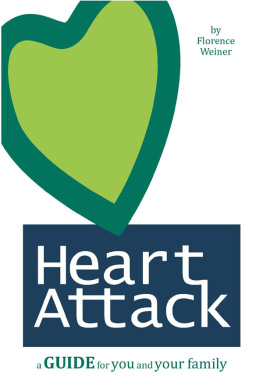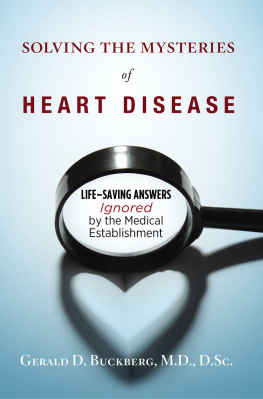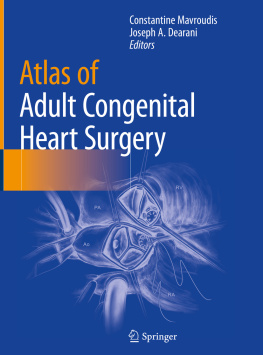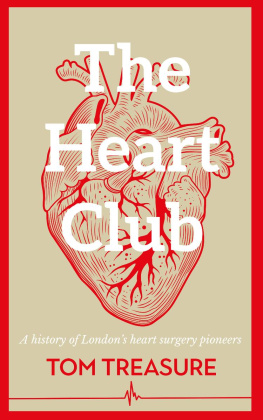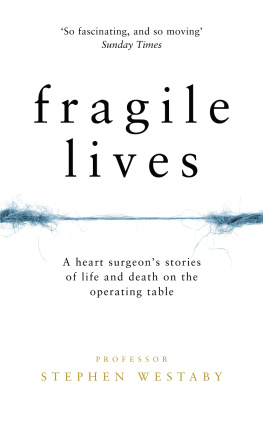Cover copyright 2019 Hachette Book Group, Inc.
Hachette Book Group supports the right to free expression and the value of copyright. The purpose of copyright is to encourage writers and artists to produce the creative works that enrich our culture.
The scanning, uploading, and distribution of this book without permission is a theft of the authors intellectual property. If you would like permission to use material from the book (other than for review purposes), please contact permissions@hbgusa.com. Thank you for your support of the authors rights.
Published by PublicAffairs, an imprint of Perseus Books, LLC, a subsidiary of Hachette Book Group, Inc. The PublicAffairs name and logo is a trademark of the Hachette Book Group.
The Hachette Speakers Bureau provides a wide range of authors for speaking events. To find out more, go to www.hachettespeakersbureau.com or call (866) 376-6591.
The publisher is not responsible for websites (or their content) that are not owned by the publisher.
B Y THE TIME his son Danny was born, Ludwig Spandau had lived three lives. He was fifty-three years old, with a young new wife, Sali, and a year-old daughter named Ruthie. He rented a walk-up apartment in Flatbush, Brooklyn, and worked on Long Island as a pharmaceutical chemist. He was a refugee, once divorced and once widowed. He spoke English with a thick German accent. Most of the people he had known had been murdered. On his forearm he had frightening scars whereso his son later suspectedLudwig had removed his concentration camp tattoo.
Ludwig had been born to well-to-do Berlin Jews. His family had owned a paper business. He had served as a radioman in World War I, in a U-boat. After the war he had attended Humboldt University in Berlin, when Albert Einstein was on the faculty. Ludwig liked to dance. He met a girl named Friedel at a dance hall in Berlin in 1922 and got her pregnant. Their daughter, Inge, was born in 1923, and not long after her birth, the couple came to terms on a divorce. Soon after the divorce from Friedel, Ludwig married again, and his second wife, Lani, converted to Judaism.
They were assimilated, cosmopolitan people, raising two boys. The Nazis came to power, and Lani was murdered by the SS, and Ludwigs father was killed at the concentration camp at Sachsenhausen. Ludwig, strong and able, was kept in Berlin, a slave on a work crew, repairing the citys roads when they were bombed. After the war, he and his two boyswho had been in hiding in Bavariawere reunited by the Jewish Agency in London, and all three came to the United States together in 1948.
Ludwig started a business formulating chemicals and trying to sell them. His English was poor. His business failed. He traveled across the country, looking for work. He returned to New York, and at a dance sponsored by a resettlement program, he met Sali. She was in her mid-twenties, almost half Ludwigs age, the child of a refugee family from Hamburg; after years in Palestine, Sali had recently been reunited with her father in New Jersey.
War and calamity had erased whatever traces of religion Ludwig might once have had, but Sali was observant. In their Flatbush apartment, they kept a kosher home. Their building was busy with Yiddish-speaking immigrants, many with concentration camp tattoos. The crowded hallways smelled of onion and roasted garlic.
The Spandaus second child, Daniel, was born in 1954. He would have been the final piece to cement their new American lives, but something was wrong with the baby. Little Danny was sickly and weak. He struggled for breath. He was prone to fainting spells. The more he was able to move around, the more frequently his lips and fingers turned blue.
At the local hospital, little Danny was X-rayed and given an electrocardiogram. Nurses fed the toddler vanilla pudding mixed with crushed radium pills and put him in a fluoroscopy machine: a kind of moving-image X-ray projected onto a screen. Their boys heart was deformed, the doctors told the parents, a cluster of four specific defects: (1) a hole in the center between the ventricles, the two largest chambers of the heart, (2) a narrowing in the pulmonary valve, the passage between the heart and the lungs, (3) a displacement of the aorta, the big artery that took the blood from the heart to the body, and (4) an enlarged right ventricle, the bottom right chamber. This complex of heart defects was called a tetralogy of Fallot, tetralogy for its four elements and Fallot for a nineteenth-century French physician, tienne-Louis Arthur Fallot. Dannys heart was shaped like a boot, and it was incapable of pumping sufficient oxygen to his body. In 1955 in Brooklyn, there was no cure for this condition, no such thing as open-heart surgery.
There was, however, a new kind of procedure that might alleviate his symptoms, one that had been invented a decade earlier. It was an operation not on the heart itselfan operation on the heart was impossiblebut on the great arteries right above the heart. The newspapers called it a blue baby operation. The doctors called it a Blalock shunt. It had been invented by a remarkable team at Johns Hopkins University in Baltimore. Dr. Helen Taussig, a deaf, dyslexic pediatrician, had conceived of the procedure; Taussig, a rare woman in medicine in the 1940s, had been put in charge of these children doomed to die and figured out how to make their lives better. Vivien Thomas, an African American technician, had designed the tools and developed the surgical technique; Thomas, the only black man to wear a white coat at Hopkins in the Jim Crow South of the 1940s, could not use the main entrance to the building where he worked and was supposed to use only the water fountains and restrooms marked colored. Dr. Alfred Blalock, for whom the shunt was named, was the white southern surgeon who led the team and performed the first operations under Thomass careful guidance.
A Blalock shunt, the Brooklyn doctors explained to the Spandaus, would not cure their child. After the operation, Daniels boot-shaped heart would still have a hole in its center, a blocked passage, and a misplaced aorta, but the shunt would reroute the blood so that more of it went to the lungs. If everything worked out, the blood that fed his body would have a higher oxygen content. The surgery was risky. There was a chance of infection, pneumonia, brain damage, or death. The long-term prospects were uncertain. The first procedures had been done in the mid-1940s, and the oldest surviving patients were mostly in their late teens.
The surgery took place in 1956, when Danny was two years old. The incision began at Dannys left nipple and cut across his side, under his left arm, all the way to his back. The doctors entered the chest cavity between the third and fourth ribs, deflating the lung and sectioning membranes until they had a clear view of the beating heart.
A Blalock shunt (sometimes called a Blalock-Thomas-Taussig shunt) is not an implant but a suture, in medical terms an anastomosis, between the two of the largest blood vessels that run right above the heart. The doctors dug into Dannys chest and located the pulmonary artery, the artery that brings blood to the lungs. They clamped the artery. They had to move fast. The operation had to be done quickly to reduce the chances of damage to the childs brain. A second incision was made in the left subclavian artery, the big artery that fed blood to Dannys left arm. The surgeons sewed the two arteries together so as to divert more blood from the subclavian artery to the lungs. Too large an anastomosis, and too much blood would flow through, overwhelming the lungs and the heart. Too small, and not enough blood would flow through, and the procedures effect would be negligible. The racing doctors completed their sutures. Quick as they could, they released the clamps. The blood from the subclavian artery joined the blood from Dannys starved pulmonary artery. More blood than ever flowed to the boys lungs.


